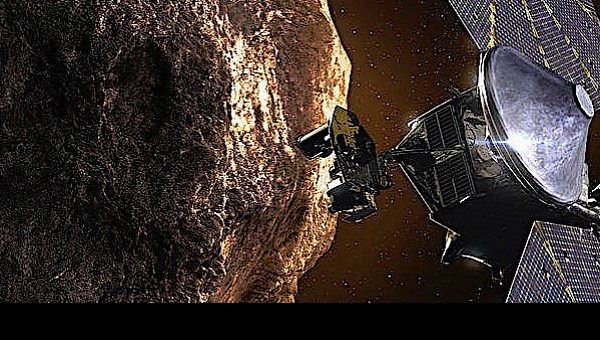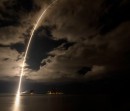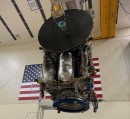Back in October 2021, a spacecraft called Lucy took off from Cape Canaveral. Named after the remnants of a female Australopithecus afarensis discovered in Africa in the 1970s, it is supposed to shed more light on the origins of our solar system by visiting the Trojan asteroids. We’re talking about a 12-year journey Lucy embarked on, and given the very long time there’s a good chance there will be surprises on the way.
Lucy’s original mission was to take a look at eight asteroids. One of them is in the main asteroid belt, floating in space between Mars and Jupiter, and the other seven are part of the large group of asteroids called Trojans that both lead and trail Jupiter in its orbit around the Sun.
Scientists believe the asteroids in these two places (and there are millions of them) are leftovers from the cosmic struggle that led to the formation of the solar system. As such, the perfect targets for a mission meant to learn more about how it all unfolded.
Lucy will look at its eight main targets using several instruments. The Thermal Emission Spectrometer (L’TES) gives it info on the surface temperature of the Trojan asteroids. The Lucy Long Range Reconnaissance Imager (L’LORRI) camera will provide images of the targets, while something called L’Ralph will help it track silicates, ices and organics, and generally determine the composition of the floating pieces of rock.
Some of these instruments will be put to the test sooner than anyone hoped. Although initially the spacecraft wasn’t supposed to make contact with any asteroids until 2025, we’re now getting word small, intentional maneuvers will put Lucy on a course that would take it within 280 miles (450 km) from the surface on such a piece of cosmic debris.
This particular asteroid, called 1999 VD57, was not on the original list, but was added because it is conveniently placed more or less in Lucy’s path (some 40,000 miles/64,300 km away, but by space standards that’s nothing). To get the spacecraft pointed at VD57, a series of maneuvers will begin later in May, while the planned arrival is set for November 1, 2023.
The rock is according to calculations just 0.4 miles (700 m) across. That makes it about the size of near-Earth asteroids made famous by the OSIRIS-REx and DART missions, but it will become the smallest “main belt asteroid ever visited by a spacecraft.”
Aside from the thrills of having something to do well ahead of schedule, and those that come with looking at some alien place for the first time, the team behind the Lucy spacecraft will also use the 1999 VD57 encounter to practice for the real deal, the visit to the eight asteroids in the main belt and around Jupiter.
Scientists believe the asteroids in these two places (and there are millions of them) are leftovers from the cosmic struggle that led to the formation of the solar system. As such, the perfect targets for a mission meant to learn more about how it all unfolded.
Lucy will look at its eight main targets using several instruments. The Thermal Emission Spectrometer (L’TES) gives it info on the surface temperature of the Trojan asteroids. The Lucy Long Range Reconnaissance Imager (L’LORRI) camera will provide images of the targets, while something called L’Ralph will help it track silicates, ices and organics, and generally determine the composition of the floating pieces of rock.
Some of these instruments will be put to the test sooner than anyone hoped. Although initially the spacecraft wasn’t supposed to make contact with any asteroids until 2025, we’re now getting word small, intentional maneuvers will put Lucy on a course that would take it within 280 miles (450 km) from the surface on such a piece of cosmic debris.
This particular asteroid, called 1999 VD57, was not on the original list, but was added because it is conveniently placed more or less in Lucy’s path (some 40,000 miles/64,300 km away, but by space standards that’s nothing). To get the spacecraft pointed at VD57, a series of maneuvers will begin later in May, while the planned arrival is set for November 1, 2023.
The rock is according to calculations just 0.4 miles (700 m) across. That makes it about the size of near-Earth asteroids made famous by the OSIRIS-REx and DART missions, but it will become the smallest “main belt asteroid ever visited by a spacecraft.”
Aside from the thrills of having something to do well ahead of schedule, and those that come with looking at some alien place for the first time, the team behind the Lucy spacecraft will also use the 1999 VD57 encounter to practice for the real deal, the visit to the eight asteroids in the main belt and around Jupiter.








